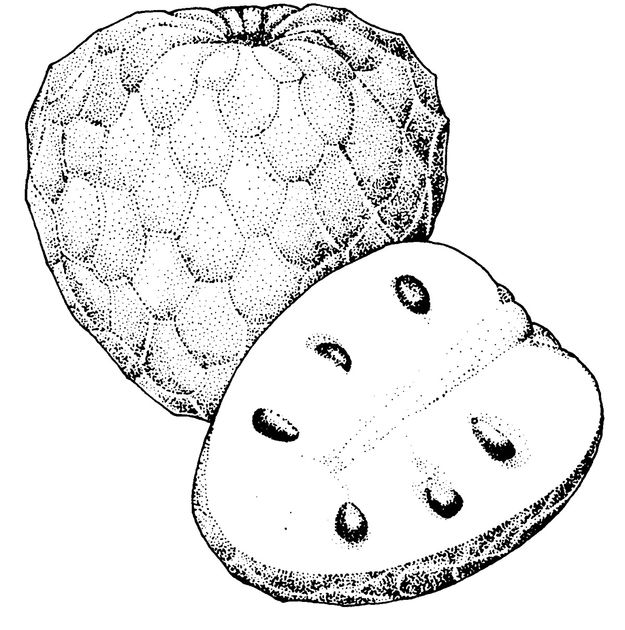Cherimoya
Annona cherimola
Published 1986
Sometimes called
Custard Apple (which is properly Annona reticulata)

Although many consider this unusual fruit unattractive, I find it stunning—like a pre-Columbian jade pine cone, or the finial for a giant Inca four-poster bed. The word cherimoya (cheree-MOY-a), as a matter of fact, comes from the ancient Quechua (Incan) language. The fruit originated in the same area, the South American highlands, and may be the earliest recorded New World fruit. For centuries it and other members of the Annonaceous family have been cultivated in South and Central America and the Caribbean, primarily for local use. Commercial plantings are increasing in South America, Spain, and Chile and are now being established in Australia and New Zealand. We have quite a substantial crop coming of age in California, as well. But, because the cherimoya is sensitive to extremes of heat and cold, requires complicated and time-consuming pollinating techniques, must be harvested by hand, and bruises extremely easily, its future, however heavenly its taste, may not be secure in this country.
Become a Premium Member to access this page
Unlimited, ad-free access to hundreds of the world’s best cookbooks
Over 160,000 recipes with thousands more added every month
Recommended by leading chefs and food writers
Powerful search filters to match your tastes
Create collections and add reviews or private notes to any recipe
Swipe to browse each cookbook from cover-to-cover
Manage your subscription via the My Membership page
In this section
Part of
Advertisement
Related Recipes
-
-
-
-
Related Reference
-
-
-
-
Advertisement



